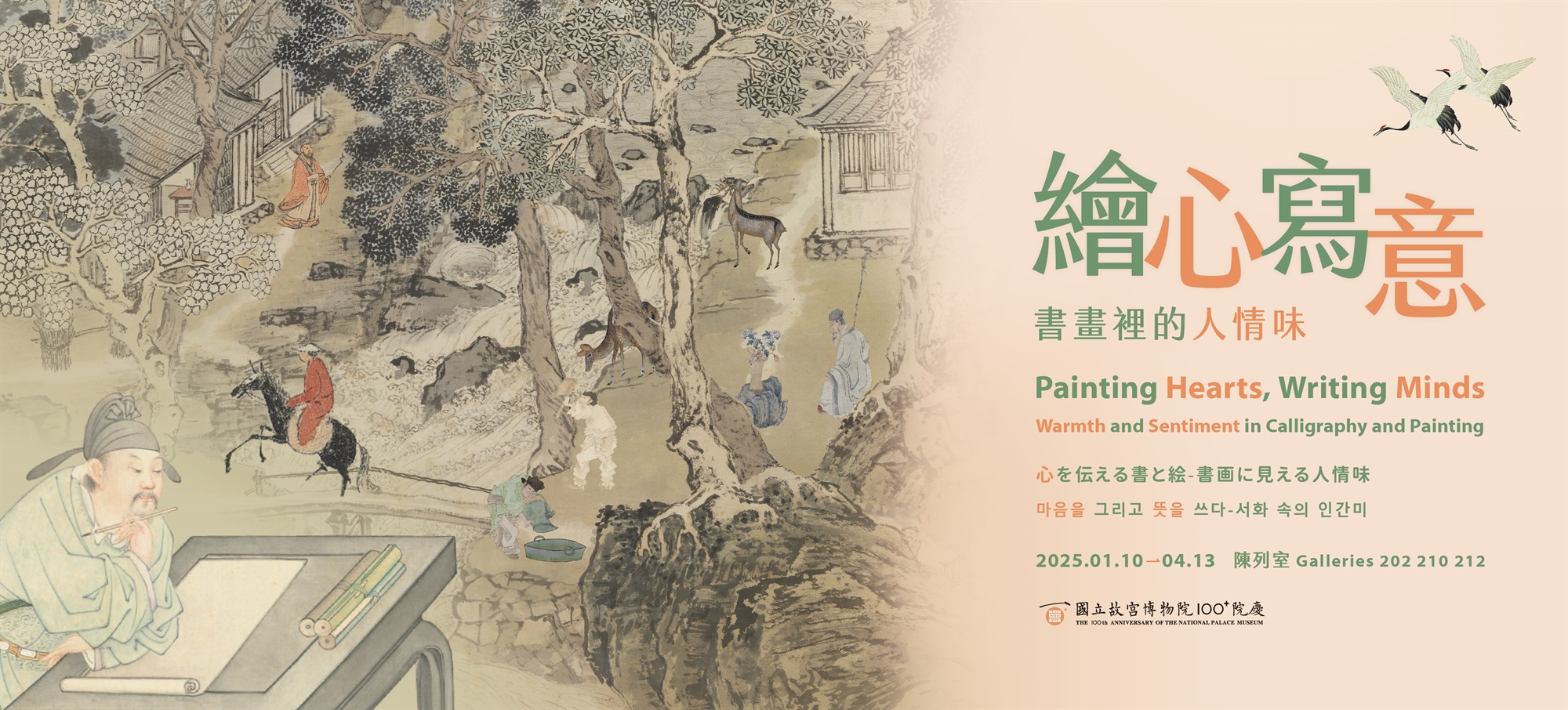Portraying Scenery, Preserving Memories
-
Deep Snow in Mountain Passes
Wen Zhengming, Ming dynasty
PaperIn the seventh year of the Jiajing reign period (1528), Wen Zhengming (1470-1559) and Wang Chong (1494-1533) went on a journey together and took temporary lodging at Lankavatara Buddhist Monastery on Shangfang Mountain in Jiangsu province, arriving amid heavy flurries of snow. While they were there, Wang Chong gave Wen Zhengming a length of excellent paper and asked him for a painting. Wen took up his brush and began to paint in high spirits, but he was unable to finish the painting during their stay. He brought the unfinished work home with him and continued to paint, only completing the work a full five years later. The end of this scroll carries Wen Zhengming’s own written story of this piece’s origins, followed by an inscription by Lu Shidao (ca. 1517-1574) extolling Wen and Wang’s integrity and character, and serving as a testament to the two men’s ironclad bonds of friendship.
Wen used classically refined coloration throughout this entire painting, accenting the mountain peaks with blue-and-green and pale ochre details. Displaying a snow-covered mountainous landscape where splashes of verdancy emerge from between the countless peaks, the scene is brought to life with human figures traveling on foot and on horseback. Wen’s brushwork was simple and straightforward, and yet bursting with vivaciousness.
-
Hundred-Fathom Waterfall
Chen Ruyan, Ming dynasty
Paper
Chen Ruyan (fl. 14th century) was a painter and poet who lived during the late Yuan dynasty and early Ming dynasty. This piece depicts the Hundred-Fathom Waterfall, a famous destination in Suzhou. In the nineteenth year of the Yuan dynasty’s Zhizheng reign period (1359), the poet Zhou Nan (1301-1383) resided for a time in the Sea-of-Clouds Hut. While there, he hiked in the mountains and gazed at the waterfall, and then wrote a poetic ode in praise of this site. A year later, he asked Chen Ruyan to paint the work exhibited here. Zhou then calligraphically inscribed his ode atop the painting and presented it to Zen Master Yunyuan at a local Buddhist monastery as a memento.The Buddhist monastery in this painting was built nestled into the mountains, close to a waterfall that weaves its way in and out of view in the hanging valley above. Chen outlined the mountains and boulders using crescent-shaped brushstrokes, and used crisscrossing lines of varying lengths to portray their texture and veins. Finally, he encrusted the mountaintops with boulders and embellished them with “moss spots.” By alternating between density and sparseness in his texturing strokes and varying the richness and paleness of his ink washes, Chen deftly created a display of the interplay of light and shadow in the natural world. This work shows the stylistic influence of Huang Gongwang (1269-1354), another Yuan dynasty painter.
-
Thatched Hut at the Southern Lake
Du Qiong, Ming dynasty
Paper
Du Qiong (1396-1474) had the style name Yongjia and the sobriquet Luguan Daoren (“the Deer Headdress Taoist”), but was best known as Dongyuan Xiansheng (“the gentleman from Dongyuan”). Hailing from Suzhou in Jiangsu province, he was a representative early Ming dynasty scholar-painter who had many friendly comings and goings with the painter Shen Zhou’s family—in fact, he was one of Shen’s teachers and mentors. This painting, completed in the fourth year of the Chenghua reign period (1468) in the Ming dynasty, was painted for Du’s friend Zhou Ding (1401-1487); it depicts the surroundings of Zhou’s countryside villa.In this painting’s foreground, a grove of pine trees growing along the riverbanks reaches for the sky. Within the structure built by the waterside, a scholar sits alone poring over a book. Mists hover in the mountain valleys, which are peppered with pavilions and waterfalls. This setting, which seems especially welcoming and habitable, demonstrates ancient scholars’ sentimentality for natural landscapes and shows their longing to live in solitary quietude in among the trees and springs. Paintings that took dwellings as their subjects were very popular among the literati, in part because they gave homeowners a place to confer their ideals and sentiments. The trend of painting such works reached its peak in the Ming dynasty.


